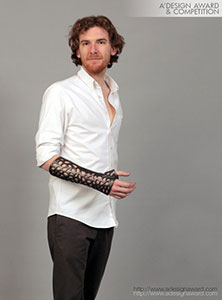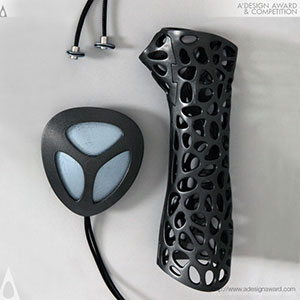The Cortex cast concept for broken upper limbs presented in mid-2013 by Jake Evill was a demonstrative example of 3D printing’s potential shown to the wider global public. Soon it may also be used as a case study in intellectual property rights as a new design, presented by Denis Karasahin at the A’ Design Award & Competiton, uses a very similar design while taking it one step further by adding ultrasound technology.

In the Osteoid case the ventilation openings are also used to implement a Low Intensity Pulsed Ultrasound (LIPUS) bones stimulation system, which needs to be applied directly to the skin and could thus not be used in traditional medical casts. Used in a daily 20 minute session, the LIPUS system would reduce healing times by 38% and increase the heal rate up to 80% in non-union fractures. The ultrasound pulse generator can be switched on and off through a button and has a colour switching LED that indicates operational states and session times.

An issue that may require a more advanced technological solution is the locking mechanism, something that the original Cortex model had taken into consideration but did not explore in full practical details. The locking system is clearly visible in Karasahin’s model but he revealed that it was not easy to develop it to be strong enough to protect the limb, practical enough to put it on the fragile injured area and simple enough so that it wouldn’t disturb the general form of the medical cast.


